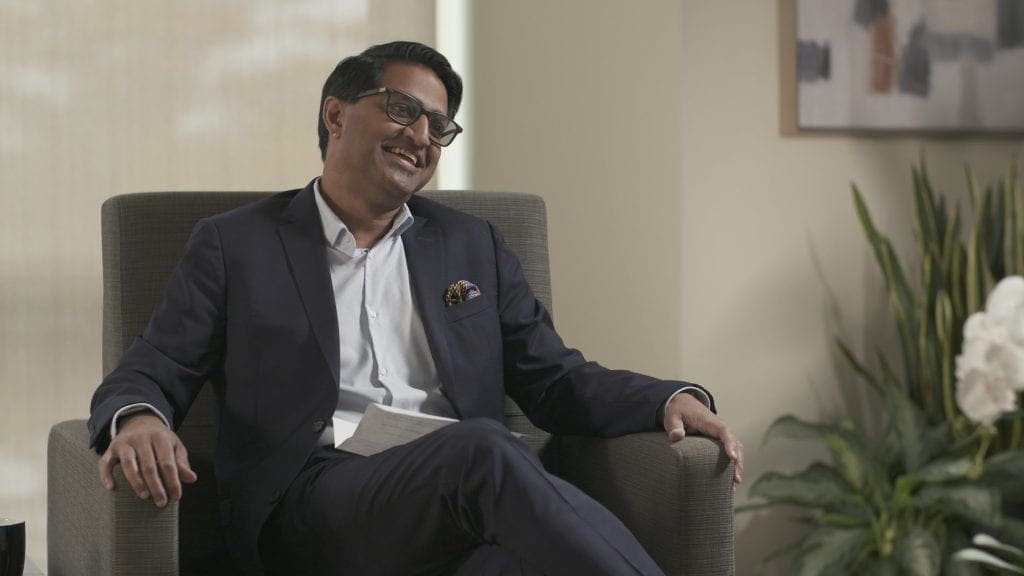
Dr. Rakesh Pai imagines a point in the not too distant, post-COVID future when people are lining up to see a movie.
“We’re all going to go to the movie theater and we’re going to watch ‘Warp Speed,’” Pai said. “It’s going to be a documentary about how the world solved the pandemic. And we’re all going to cheer at the end.”
Pai has watched the development of COVID-19 vaccines closely, as president of the Metro Health Medical Group and Metro’s Chief Population Health Officer. He’s also a volunteer in one of the large-scale trials that are testing the safety and efficacy of a vaccine candidate.
As a doctor, he has complete trust in a process that has resulted in a number of promising vaccines less than a year since the first documented case of COVID-19 in the United States.
The success of “Operation Warp Speed” was not because anything was rushed about the development and evaluation, Pai said. Far from it. “There were a lot of things that went right to develop these vaccines,” he said. “But we didn’t cut corners.”
One of the things that went right, he said, was funding from the federal government that took away the risk for vaccine makers so they could begin production as soon as they had viable candidates. This allowed a parallel process: Vaccines could be manufactured. Packaging, storage and distribution logistics could be engineered. All the while, scientists and regulators continued the rigorous process of testing vaccines in tens of thousands of human subjects.
This means that tens of millions of doses can be ready for distribution soon after approval.
Another advantage was that the world’s leading pharmaceutical companies were part of the plan from the start. They had promising technology and advanced research in hand that could be deployed right away; much of the vaccine research had been conducted at the National Institutes of Health.
“When China posted the genetic sequence of the coronavirus, probably around this time last year, that was the Bat-Signal to all these companies to say, ‘OK, now we can figure out how it replicates. We can create it. We can study it. We can subvert it,’” he said.
Meanwhile, federal regulators from the National Institutes of Health and the Biomedical Advanced Research and Development Authority designed large-scale studies to test the vaccines for safety and efficacy. The Food & Drug Administration developed guidelines that the vaccines will have to meet for Emergency Use Authorization.
Vaccine development follows a rigorous process that begins with preclinical testing with animals to determine if the vaccine triggers an immune response. Then, Phase 1 safety trials begin with small numbers of human volunteers to test safety and efficacy.
Phase 2 expands the trials into larger groups, hundreds of people divided demographically, to see if their response varies and to further test safety and efficacy.
Finally, Phase 3 trials involve tens of thousands of volunteers, half of whom receive placebos. This is to test for side-effects, as well as efficacy. Neither the researchers nor the volunteers know who receives the vaccine and who receives a placebo. That’s to avoid the “treatment effect,” Pai said – the ability of the mind to create a reaction to just the idea of being treated.
“You want to be able to show a group of anyone that’s going to take any kind of treatment, ‘Hey, the people who actually got the real treatment and the people who got the placebo treatment, they actually had fairly similar side effects,’” he said. “And that was encouraging to the NIH when both arms of the studies experienced rather minimal things. And nothing was of terrible significance. That’s reassuring.”
Another goal of the large-scale trials was to enroll volunteers who represent the diversity of the entire population, Pai said. This was especially important for COVID-19 because the pandemic hit non-white communities disproportionately hard.
Pfizer, the first in the United States to apply for Emergency Use Authorization, has reported representation of non-white backgrounds among 30 percent of its U.S. participants and 42 percent of global participants. Moderna, which also submitted data seeking authorization, slowed enrollment during its Phase 3 trial to ensure representation of diverse populations. It published a demographic summary of participants in October, reporting that 37 percent represented non-white populations.
This data and much, much more – thousands of pages – will be reviewed by panels of scientists, physicians, research analysts and other experts at the Food and Drug Administration. This is a more painstaking process in the United States than in other countries.
Russia was the first country to announce approval of a COVID-19 vaccine, even before its Phase 3 trial was completed – a risky decision in the eyes of most scientists. In Britain, the government approved emergency use of the Pfizer vaccine on Dec. 2, at least a week before a decision was expected by U.S. regulators.
The difference is that the United States is one of the few nations where regulators review the raw data collected during trials, rather than accepting the findings from vaccine manufacturers. This requires poring over all of documentation and re-analyzing the data from the trials.
Pai is confident this rigorous process will ensure any vaccine meets the highest standards before it is released. And the heroes of the documentary he imagines will be those who believed in that process.
“It looks so successful now, but I’m sure there were a bunch of people saying, ‘We can’t do this,’” he said. “There have been voices of dissension like that. But someone said, ‘No, we can do this. We can do it thoroughly. We can do it accurately. And we can do it safely.’”
Watch for other articles in this series:
Part 1: A doctor volunteers for a vaccine trial
Part 3: Confronting rumors and creating trust in a vaccine